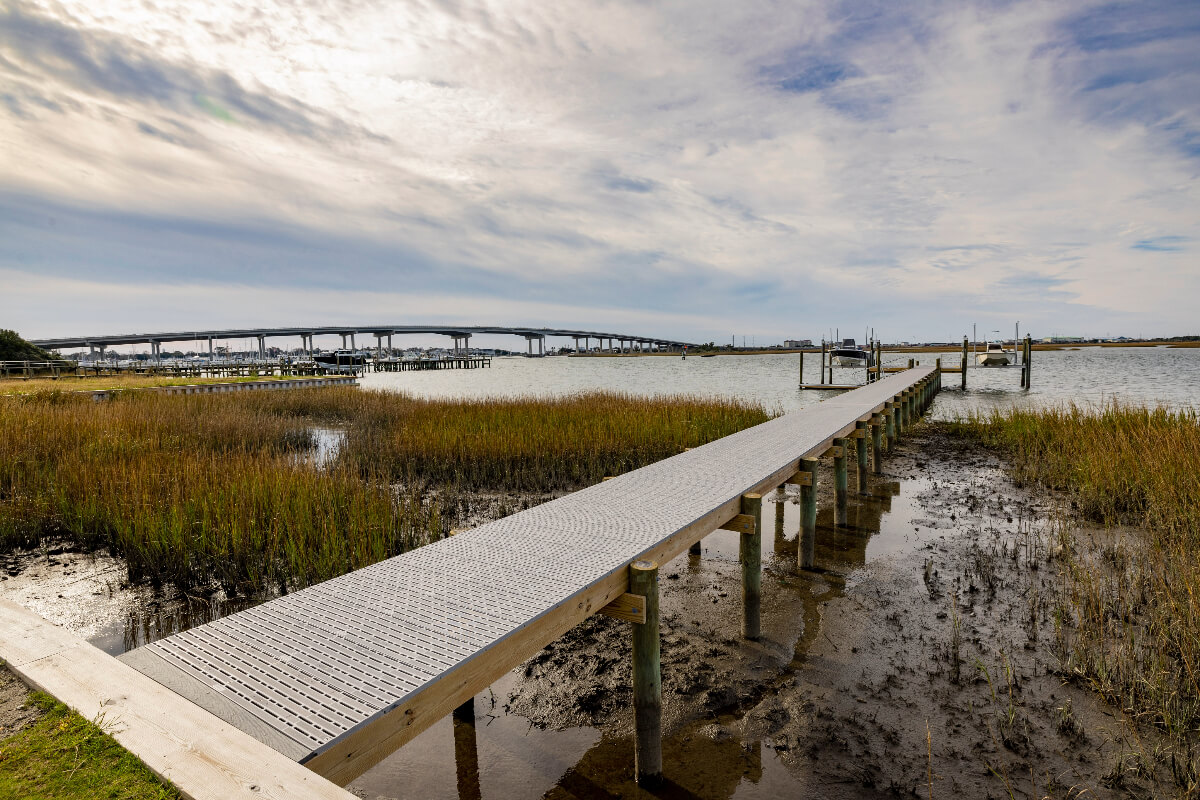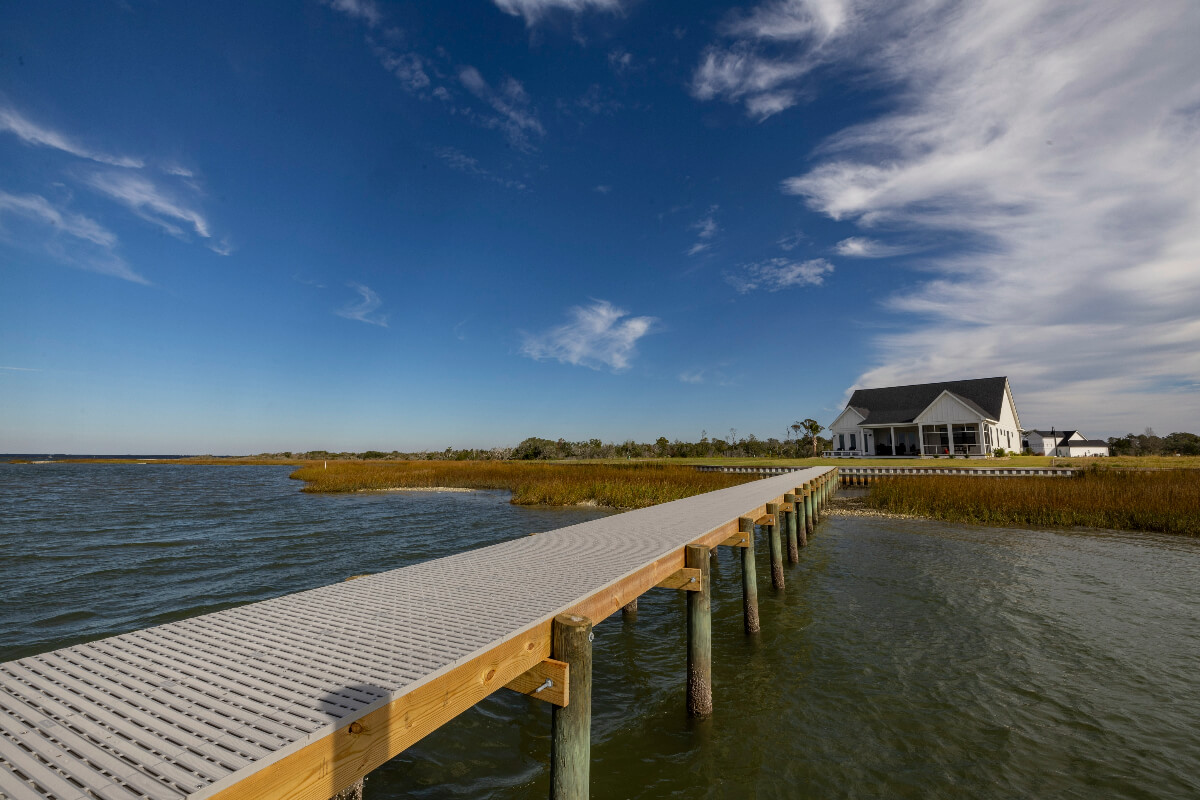
Proper winter maintenance is essential to preserve its longevity and ensure safe use in the warmer months. We’ve put together a guide to help you prep your dock so you can rest easy knowing winter’s conditions won’t wreak havoc on your dock decking.
Winter Maintenance Tips for Your Dock
Cleaning and Inspection
Begin your winter maintenance routine by thoroughly cleaning and inspecting your marine deck. Remove any debris, including leaves, twigs and dirt, which can trap moisture and lead to mold or mildew. Inspect the dock for any loose or damaged components, such as fasteners or connectors.
Cleaning varies from material to material — marine deck materials such as wood require more thorough cleaning, and softer materials need to be used for the cleaning, so they do not damage the wood. On the other hand, more sturdy materials, such as metal, plastic and composite, have a more simple cleaning routine.

Protective Coatings
Some of the marine deck materials can be further protected by applying a specialized dock protectant or wax. This will create an additional barrier against moisture, UV rays and potential staining from algae or other contaminants.
Some materials, such as polypropylene, are already built to withstand UV rays and moisture and do not need further coating.
Secure Loose Components
Check all hardware and fasteners to ensure they are secure. Winter weather can cause marine decking materials to contract and expand, potentially loosening connections. Tighten any loose bolts, nuts or brackets to maintain the structural integrity of your dock.
Remove Snow and Ice
Heavy snow and ice buildup can place additional stress on your dock’s supports and connectors. Regularly remove snow using a snow shovel with a plastic blade. Clear away ice patches using a plastic ice scraper to prevent slipping hazards. For both snow and ice removal, be gentle to avoid damaging the dock’s surface.
Proper Storage
If your region experiences particularly harsh winters, consider removing lightweight accessories, such as chairs, tables and benches, and storing them in a dry, safe location. This reduces the risk of these items being blown away or damaged during winter storms.
If the deck boards are removable, like those from Titan Deck, be sure to store them in a way that water cannot pool in the underside of the boards. For instance, store the top side of the board facing up or leaning against something so water can drain out.
Maintain Proper Drainage
Ensure that your dock has adequate drainage to prevent water from pooling and freezing. Proper drainage channels and scuppers should be clear and functioning correctly to allow water to flow off the dock surface.

Regular Inspections
Throughout the winter season, periodically inspect your polypropylene dock for any signs of wear, damage or shifting. Address any issues promptly to prevent them from worsening.
As winter gives way to spring, take the time to perform a thorough inspection of your dock. Remove any remaining protective coatings, clean the surface and check for any hidden damage that may have occurred during the winter months. This proactive approach will ensure that your dock is in optimal condition for the boating season ahead.
The Advantages of Polypropylene Dock Materials

Polypropylene offers several advantages, especially for those seeking a hassle-free experience:
- Durability: Polypropylene is highly resistant to environmental factors, including UV rays, moisture and extreme temperatures. It doesn’t rot, warp or splinter like traditional wood materials.
- Low Maintenance: Unlike wood which requires regular staining, sealing and repairs, polypropylene docks are virtually maintenance-free. They don’t need annual refinishing or extensive upkeep.
- Safety: The non-slip surface of polypropylene ensures a secure footing for dock users, even in wet or icy conditions.
- Longevity: Polypropylene docks typically have a longer lifespan than wood docks, reducing the need for replacements.
Homeowners with docks, especially those constructed from low-maintenance materials like polypropylene, can enjoy peace of mind knowing that their investment will stand up to the harshest winter conditions.
When selecting polypropylene dock decking, it’s crucial to pick a manufacturer that’s perfected its design. Titan Deck’s high-quality, low-maintenance polypropylene boards are designed to endure the elements while maintaining their aesthetic value for years to come.
With no warping, bending, cracking, splinters or tiresome upkeep, Titan Deck boards are built to last. They are also designed with perforations so high winds and excess water from winter storms can pass right through without damaging the structure.
Embrace the winter months with confidence, knowing that your waterfront retreat is well-protected with Titan Deck and ready to welcome you back in the warmer seasons. For more information on Titan Deck’s polypropylene board options, visit our site and discover what our solutions can do for you.
